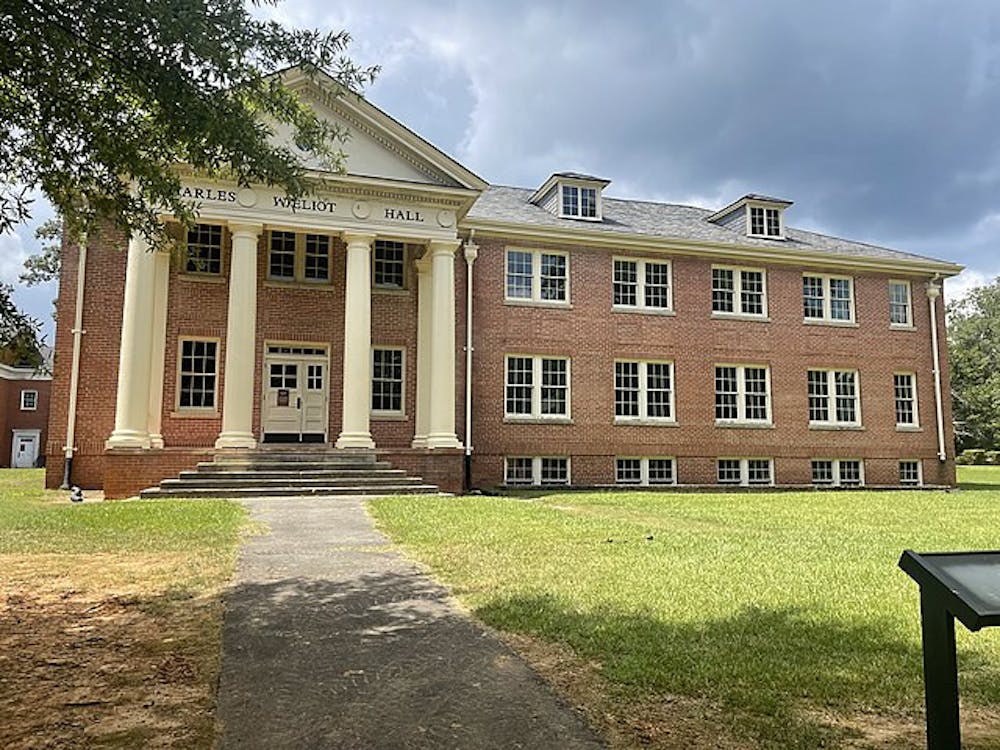The Palmer Memorial Institute, a historic secondary school that served Black students before desegregation, was designated one of the nation’s ”most endangered historic” places in May.
Damages in the school’s structure have ballooned over decades of neglect: crumbling walls, water and pest damage, mold from poor ventilation. A fire in 1971 burned down the main classroom spaces and left a large hole in the girls dormitory.
A week after the National Trust for Historic Preservation’s designation, it seemed like the designation could be a breakthrough for the historic school in Sedalia, N.C. Gov. Roy Cooper’s proposed budget for the 2022-23 fiscal year included an allocation of $16 million for renovations.
However, funding for the institute’s preservation was nowhere to be found in the legislature-drafted budget bill Cooper signed Monday.
“It is a massive setback that we did not receive funding for the dormitories in this latest budget,” wrote assistant site manager Liz Melendez in an email. “We cannot guarantee the future of those buildings without major sustained funding. They will continue to decay and suffer storm damage until we do something, and we can’t do anything without sustained funding.”
Currently, the funding for maintaining the Charlotte Hawkins Brown Museum, the state site the school is on and named after the school’s founder, comes mainly from the state budget. Funds are also supplemented by site tours, which cost $2 per person, according to Melendez.
Melendez said that if the state funding was approved, it would have gone towards stabilizing the dormitories’ foundations and roofs, removing toxic materials, and potentially getting power and water back into the building.
“From the career in the approach of Dr. Charlotte Hawkins Brown, to the education of more than 2000 students over nearly seven decades, the Palmer Memorial Institute is incredibly important in the history of the United States of American education,” said Katherine Malone-France, chief preservation officer at the National Trust.
Brown, an author, educator and advocate, opened PMI in 1902 after the small church school that served Guilford County’s Black families closed.
“Charlotte had been a teacher at that school,” Melendez said. “And she knew and understood that this community deserved an education, and she couldn't just leave, knowing that they wouldn't have any other options.”
The Palmer Memorial Institute expanded to educate over a thousand Black students over nearly seven decades. At its peak, the school’s campus included more than 300 acres of land and 14 buildings. The school became one of the few Black schools to be accredited by the Southern Association of Colleges and Secondary Schools.
“By the 1940s and 1950s, Palmer was known internationally as a college preparatory and social finishing school,” Melendez said. “It was like one of the most attractive destinations for Black middle class families to send their kids to go be educated and to have a chance to go on to college, and to achieve high-level things.”
This year, 122 sites around the country were nominated through the National Trust’s public nomination process, according to Malone-France. The sites were analyzed based on their national significance, whether they faced “urgent threats,” and whether the site already has “dedicated local groups and individuals who are fighting for them.”
PMI fit all their criteria for endangered and historic sites, Malone-France said.
Melendez said that preserving the dormitories is an integral part of telling that story, especially since the 1971 fire also burned down the main classroom spaces in the school.
“Losing the dormitories would be losing that kind of sensory history, of the literal exact spot where these students were growing socially, making friends, meeting boyfriends and girlfriends that they would keep going to college,” Melendez said.
Being included on NTHP’s list could bring support to PMI “in a range of different ways,” Malone-France said. She also noted that in the 35 years that the National Trust has created an annual list of endangered places, less than 5% of the 300 sites listed have been lost.
Despite the lack of state funding, Melendez wrote that since the National Trust’s list was published, the Palmer Memorial Institute has received increased interest and visitation from the media and public.
“My hope is that folks who come visit this site, learn this history, hear the stories of the students who attended Palmer can carry those stories to their communities, and [contact] their legislators and let them know why it’s important to preserve this site,” Melendez wrote. “The stories these buildings carry tell us so much about our state, about Black resilience, about Black education. This site has the ability to be a community hub, a place for storytellers, artists, community leaders. We can’t make that happen until we have the investment necessary to keep the site standing.”
Get The Chronicle straight to your inbox
Signup for our weekly newsletter. Cancel at any time.
Anisha Reddy is a Trinity junior and a senior editor of The Chronicle's 118th volume.


